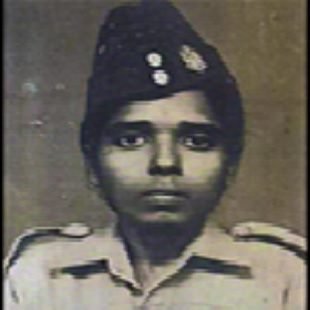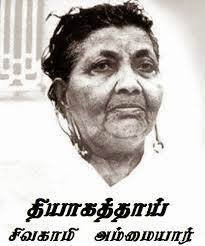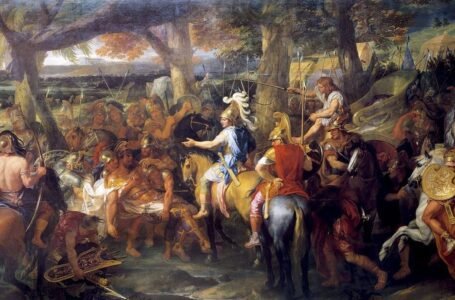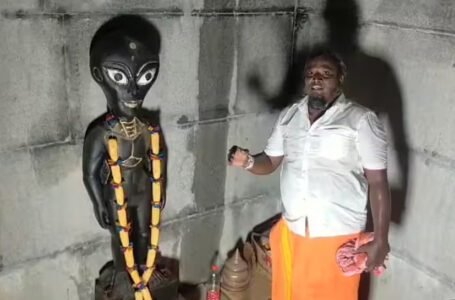Sivagami Ammayer- The Tigress from the South

During a time period when independence was mainly a male-dominated movement, Sivagami Ammayer rolled the dice in accordance to her own will, even if there were grave opposition present on the other side. The Indian Freedom Movement consisted of more women than one can imagine. However most of their contributions still stay largely undocumented, and those few who make it to the forefront have scanty information available about them. Thus, due to such a state, narratives of women are washed down the drain.

One of the names that was well-existent but not well-mentioned was that of Sivagami Ammayer. Her unparalleled sacrifices although stayed behind curtains, managed to make a future impact. Join us as we attempt the exact opposite and highlight the unseen. Therefore today, we focus on the life and essence of Sivagami Ammayer, the woman with extraordinary courage in her veins.
EARLY LIFE
In the year 1933, a young girl was born in the Annasagaram village of the Dharmapuri district in Tamil Nadu to Marimuthu Mudaliyar and Chinnathai. Going by the name Sivagami, she was the elder daughter of the family and the older sibling of her brother Parantham. A family of humble beginnings yet strong grit, they emigrated to Malaysia during the early years of Sivagami. Starting from square one, it was here that her father worked at a tea estate.
Here Sivagami studied at the Jai Hind Hindu Padasalai at Kuala Lumpur. It was here that Sivagami received her primary education and surrounded by a politically charged atmosphere. She once listened to a live speech given by Subhash Chandra Bose, who during the time, was quite an active freedom fighter on the international frontier.

Greatly inspired by his patriotic speech, young Sivagami was intent on giving her contribution to the freedom struggle.
ENTERING THE INA
At the ripe age of 11, Sivagami joined the ‘Balak Sena’, the children’s wing of the Indian National Army (INA). This wing was specifically meant for young boys and girls, who were keen on participating in the freedom movement. It was here that Sivagami began her journey as a freedom fighter. Here she served as a caretaker and head of the Social Welfare Hostel from 1942 and 1945 where she led and executed the social upliftment activities undertaken by the hostel. It was during this period that Sivagami did a street play titled “Veer Vanitha” along with her younger brother Parantham.
They went from street to street,attempting to awaken the spirit of independence amongst the crowd. It was through this strategy that they could spread the word of freedom and raise funds for the INA. Despite her young age, Sivagami’s zeal cut through the apprehensions of her elderly like a knife. This zeal did not take long to catch the eye of Subhash Chandra Bose himself. Inspired by her moxie and unending passion for freedom, he offered her to come with him to Burma. However, she refused to do so and chose to work in Malaysia.

Sivagami and her brother carried on their welfare activities and helped hundreds of troops who were injured during World War Two which at that time, was carried out at a full-fledged pace. Multiple camps were bombed at the time which led to the injury of many troops. Sivagami and Parantham rescued the victims of the bombings at Sarkar Camp and offered them medical relief.
PORTRAYAL OF OUTSTANDING BRAVERY
Being a freedom fighter came with its own setbacks too. The lurking fear of being captured by the British officers was constantly present. One fateful day in 1943, the British troops captured the Social Welfare Hostel and asked Sivagami to dance in front of the British officials for the sake of their entertainment. Despite the occurrence of such a harrowing situation, Sivagami sternly refused to dance. It was the purest form of courage that was displayed by Sivagami at 11 years old.
However, a more deeper truth of the occurrence of such instances would be that “female” freedom fighters were more likely to be subjected to such degrading forms of punishment or disrespect. And such instances were also more likely to occur when it was a woman from a working class background. It was due to socio-political complexities like these that women found it harder to establish themselves on the forefront of the freedom movement.
Women that participated in the freedom movement risked the occurrence of such circumstances. Despite such additional dangers that were very often targeted at women, they chose to carry on the baton of freedom.It was additional reasons like these that signalled the dire need for female based narratives in the independence movement.

CONCLUSION
Although most of her later freedom activities stay mainly undocumented, her contributions to the freedom struggle were finally honoured in 1973, when the Tamil Nadu government awarded her the ‘Tyaga Chemmal’ award. Later in 1993, she was honoured by the CM then of Tamil Nadu Dr. J. Jayalalitha. Today she is considered one of the prominent female freedom fighters of Tamil Nadu. Apart from that, her story as a freedom fighter stays alive in the historical archives of the Indian Government.
Sivagami Ammayer and her story throws light upon the unreal courage and sturdiness in shaky circumstances that women are capable of portraying. It also reminds one to be on the lookout for understanding the unseen narratives of these female freedom fighters. And how, although less talked about, their narratives deserve an equal share of gratitude from all the citizens.


